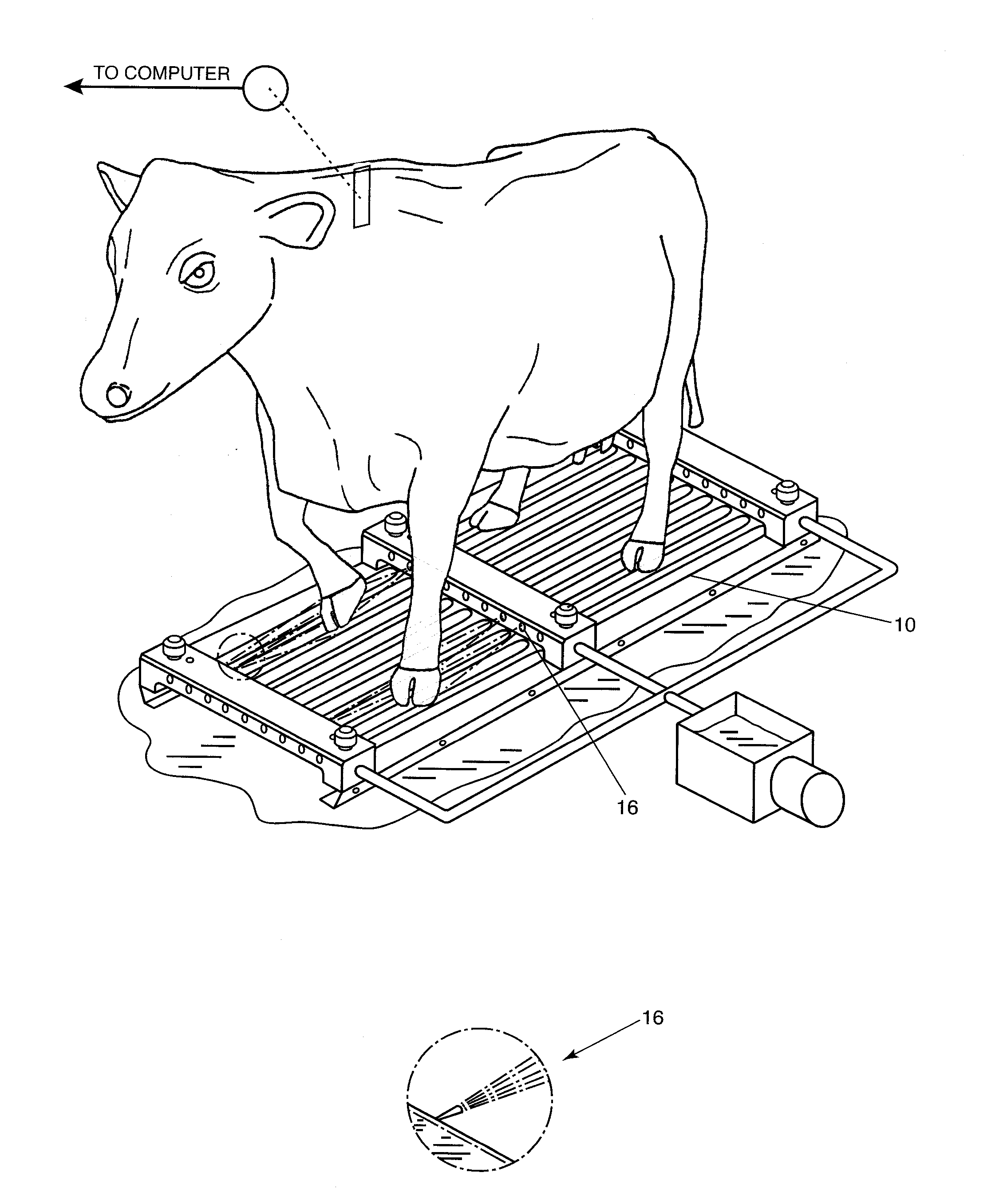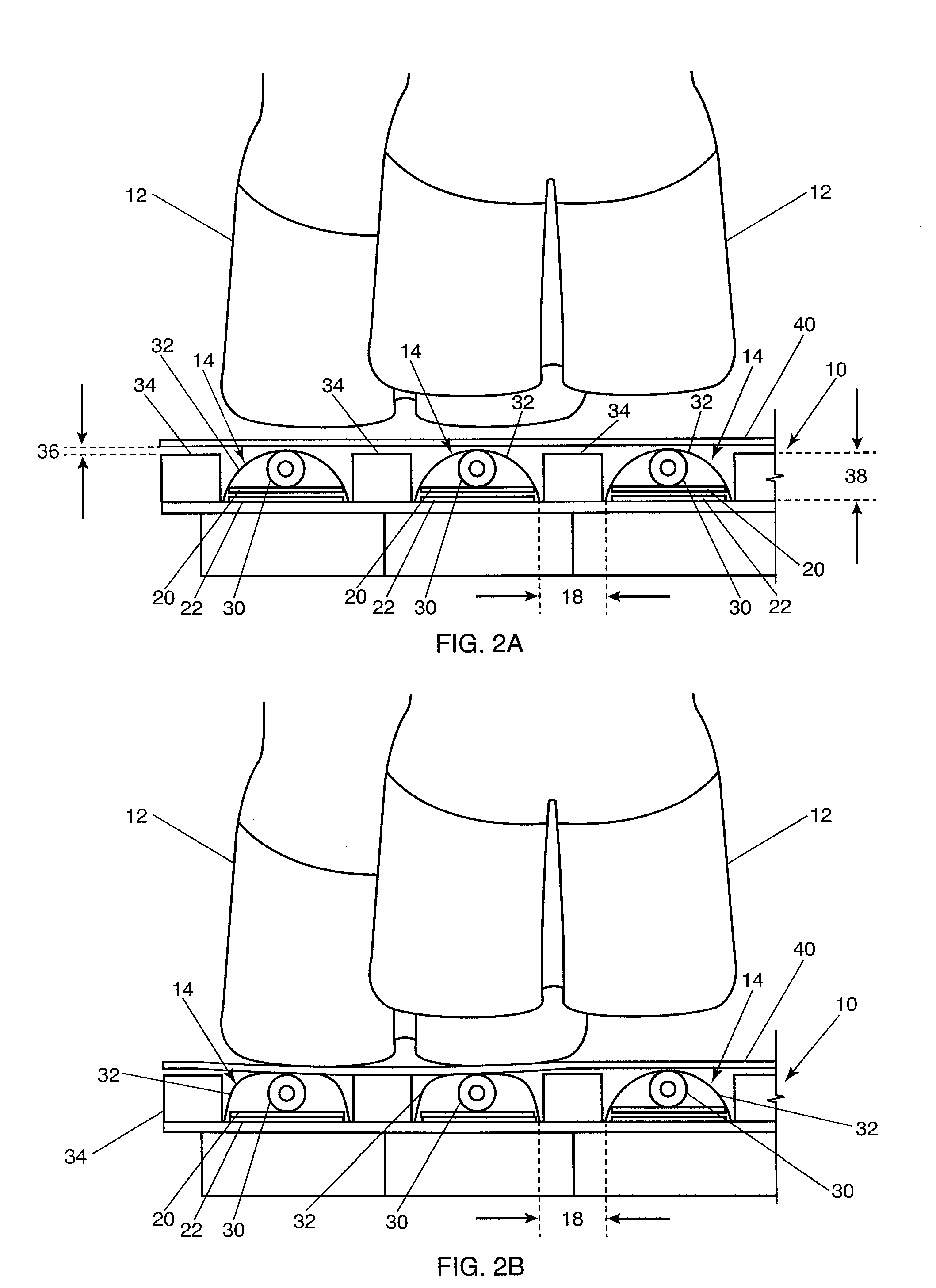Method for the treatment of animals with hooves
a technology for treating animals and hooves, which is applied in the field of animal treatment, can solve the problems of difficult control and management of insects and other pests on domesticated animals, affecting production, and affecting production, so as to prevent or reduce the swelling of the feet, improve the blood flow in the hooves, and be practical and less expensive to manufacture.
- Summary
- Abstract
- Description
- Claims
- Application Information
AI Technical Summary
Benefits of technology
Problems solved by technology
Method used
Image
Examples
Embodiment Construction
)
Logical Sensor Mat for Appling Liquids
[0030]As used in this disclosure, the term “foot” means not only the terminal part of a vertebrate animal's leg, but also the hoof, the pad, the pastern, the dewclaw, the hock and the portion below the knee or hock on an animal such as a domestic bovine. Although the examples discussed in this disclosure are limited to dairy cows, the claimed invention includes treatment of any type of animal.
[0031]The claimed invention relates to the use of incorporating spraying logic into the sensor mat to detect and apply various liquids onto the feet of an animal or human. The system described in U.S. Pat. No. 8,276,545 (hereinafter '545 patent) is complex and has sensitive electronics that are not conducive to harsh dairy environments. Another shortcoming is the cost and complexity making it only suitable to be deployed in 500 cows, larger dairies or other large-scale applications. Another disadvantage is that the electronics are very complex and would re...
PUM
| Property | Measurement | Unit |
|---|---|---|
| compressible | aaaaa | aaaaa |
| flexible | aaaaa | aaaaa |
| pressure | aaaaa | aaaaa |
Abstract
Description
Claims
Application Information
 Login to View More
Login to View More - R&D
- Intellectual Property
- Life Sciences
- Materials
- Tech Scout
- Unparalleled Data Quality
- Higher Quality Content
- 60% Fewer Hallucinations
Browse by: Latest US Patents, China's latest patents, Technical Efficacy Thesaurus, Application Domain, Technology Topic, Popular Technical Reports.
© 2025 PatSnap. All rights reserved.Legal|Privacy policy|Modern Slavery Act Transparency Statement|Sitemap|About US| Contact US: help@patsnap.com



